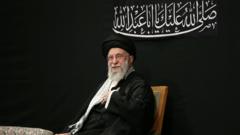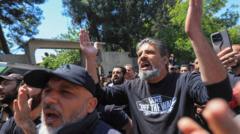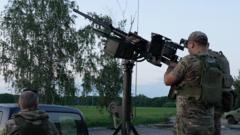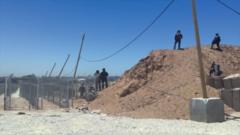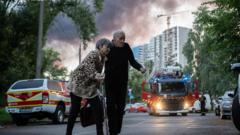**As paramilitary groups adjust their tactics, the use of drone warfare raises concerns of humanitarian crises while asserting control over strategic regions.**
**Drone Warfare Escalates in Sudan Conflict: A New Era of Civil Strife**
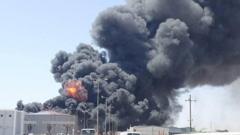
**Drone Warfare Escalates in Sudan Conflict: A New Era of Civil Strife**
**Recent drone attacks in Sudan signal a shift in strategy for paramilitary forces, escalating the ongoing civil war.**
Port Sudan, once deemed a refuge from conflict, has become the scene of a series of significant drone assaults, marking a new chapter in Sudan's ongoing civil war. Following recent victories by the Sudanese Armed Forces (SAF) in reclaiming the capital, Khartoum, the Rapid Support Forces (RSF) have launched unprecedented drone strikes targeting critical infrastructure in Port Sudan, the nation’s primary access point for humanitarian aid.
In light of these developments, experts have noted that the RSF appears to be employing a "shock and awe" strategy. The attacks have prompted power outages and water shortages, destabilizing the city that once housed government officials and humanitarian organizations. Alan Boswell, a Horn of Africa expert, indicated that the RSF's aggressive strategy showcases advanced drone capabilities previously unseen in the region and significantly heightens the conflict's stakes.
This surge in drone activity highlights a tactical shift for the RSF, who, after losing ground in central Sudan, are now refocusing their efforts on remote warfare to exert influence and maintain relevance. Political analyst Kholood Khair commented on the RSF's intent to create a narrative that challenges the SAF's control in Khartoum, suggesting that despite territorial losses, the RSF seeks to undermine the SAF’s governance capability.
While the RSF has refrained from directly claiming responsibility for the Port Sudan drone strikes, they have leveled accusations against the SAF for committing war crimes, particularly in response to a series of military actions against RSF-controlled territories. The escalated use of drones, particularly loitering varieties known as kamikaze drones, indicates technological advancements that have changed the tactical landscape; the RSF aims to disrupt the SAF's operational capabilities without the need for physical incursions into contested areas.
Authorities have pointed fingers at foreign actors, notably accusing the United Arab Emirates (UAE) of supplying drones to the RSF while claiming that Iran is backing the SAF. Concrete evidence regarding these claims remains complex, yet reports have suggested a correlation between external support and the escalation of drone warfare in the region. Justin Lynch, managing director at Conflict Insights Group, asserted that the technological advancement in drone capabilities shifts the operational dynamics, drawing insights from the broader conflicts influenced by foreign involvement in drone technology.
As the RSF continues to target strategic positions in Port Sudan, both humanitarian and regional stability hang in the balance. The escalating skirmishes have raised alarms within the international community; the UN has cautioned that these developments may have dire consequences for humanitarian operations essential for civilians. With a war that has already inflicted devastating losses on the Sudanese populace, the trajectory of this conflict raises urgent questions regarding future interventions and the potential for peace.
The Sudanese foreign ministry has called for international action against perceived threats, signaling that without diplomatic resolution, the conflict may prolong indefinitely, echoing sentiments for comprehensive strategies to mitigate the humanitarian disaster continuing to unfold amid the evolving war landscape.





